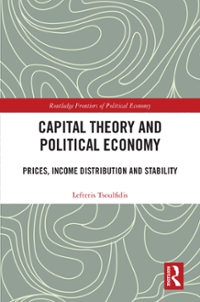Question
Take a trip to your state's annual state fair, and you will undoubtedly see many advanced pricing methods implemented by the fair itself and the
Take a trip to your state's annual state fair, and you will undoubtedly see many advanced pricing methods implemented by the fair itself and the vendors and amusements inside. For each of the following, identify which pricing method is being employed and provide a brief explanation of how this specific example is expected to increase profit (vs. the alternate scenario where the firm in question simply charges the same price for all units of the good to all consumers). For each, also consider whether there any way this could actually decrease profit.
- The state fair charges $14 to adults (ages 13-64), $12 to seniors (age 65+) and children ages 5-12.
- . The state fair offers special days where everyone receives a discounts: on Thrifty Thursdays, all prices are reduced.
- Last year, Bill's Burgers sold hamburgers for $6 and French fries for $4. This year, Bill is also offering a basket with one of each for $8.
- Louise's Lemonades sells small lemonade for $3, large lemonade for $6, and a souvenir large cup for $10 that comes with unlimited $2 refills.
- The Midway amusement area sells individual tickets for $1 each that can be used to play games and ride rollercoasters, but also sells bracelets for $20 that allow the wearer to enjoy unlimited rides all day.
- Nick's Knickknacks sells hand carved signs with quaint sayings on them (like "Life is Better at the Lake" or "Welcome to our Cabin") for $40 each or two for $60.
pleasewhile answering take this info into consideration :
Price Discrimination: Charging different prices to different segments of consumers based on their willingness to pay. In the document, this was discussed in the context of different demand functions for adults and seniors.
Promotional Pricing: Offering discounts or special prices for a limited time to boost sales. While not explicitly named in the document, the concept aligns with the idea of adjusting prices to influence demand.
Bundle Pricing: Selling multiple products together at a reduced price compared to buying them separately. This is a form of price discrimination where consumers are incentivized to purchase more.
Two-Part Pricing: Charging an upfront fee and then a per-unit price. This was discussed in the document in the context of access fees and user fees.
Volume Discount: Offering a reduced price per unit when a consumer buys in bulk or more than one.
Step by Step Solution
There are 3 Steps involved in it
Step: 1

Get Instant Access to Expert-Tailored Solutions
See step-by-step solutions with expert insights and AI powered tools for academic success
Step: 2

Step: 3

Ace Your Homework with AI
Get the answers you need in no time with our AI-driven, step-by-step assistance
Get Started


